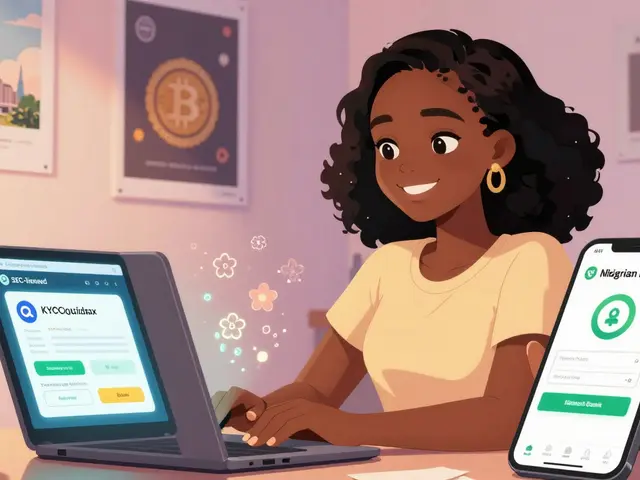Web3 vs Web2: What’s the Real Difference Today?

Web2 vs Web3 Earnings Calculator
Web2 Earnings
Web3 Earnings
Results
Enter your earnings data to see the comparison
The internet you use every day isn’t the same as the one your parents used in the 2000s. Back then, you posted photos on Facebook, uploaded videos to YouTube, and bought things through Amazon-all through platforms that owned your data, your attention, and sometimes even your digital stuff. That’s Web2. Today, a new version is rising: Web3. It’s not just a tech upgrade. It’s a shift in who really controls the internet.
Web2: The Internet We Know
Web2 is the internet you’re already familiar with. It’s where you log in to Facebook, tweet on X, watch videos on YouTube, and shop on Shopify. These platforms let you create content, comment, like, and share. But here’s the catch: you don’t own any of it.
Facebook owns your photos. YouTube owns your videos. Twitter owns your tweets. They sell your data to advertisers. They change the rules. They ban accounts. They shut down features. In 2023, Meta’s terms of service gave them a permanent, royalty-free license to use anything you post-even if you delete it. That’s not a bug. That’s the business model.
Technically, Web2 runs on client-server architecture. Your phone or laptop (the client) sends a request to a server owned by Google, Meta, or Amazon. That server processes your request, pulls data from its database, and sends back a response. It’s fast. It’s reliable. And it’s centralized. One server goes down, and millions lose access. In 2022, Uber’s server crash left 3.2 million drivers unable to work for nearly an hour. No servers. No income.
Web2 uses familiar tools: JavaScript, HTML, CSS. Developers build apps using React, Node.js, or Django. These tools are mature. Documentation is clear. You can learn to build a Web2 app in 2-3 months. Over 65% of developers use JavaScript. The ecosystem is huge. But it’s controlled by a handful of companies.
Web3: The Internet You Own
Web3 flips the script. Instead of trusting a company to hold your data, you hold it yourself-with a digital wallet. Instead of asking Facebook for permission to post, you post directly to a blockchain. Instead of letting YouTube decide if your video gets demonetized, you own your content as an NFT and can sell it anywhere.
Web3 is built on blockchain technology. Ethereum, launched in 2015, was the game-changer. Before Ethereum, blockchains like Bitcoin could only handle money transfers. Ethereum added smart contracts-self-executing code that runs without intermediaries. That opened the door to decentralized apps, or dApps.
With Web3, you interact through wallets like MetaMask or Phantom. These wallets hold your private keys. No one else can access your assets. Not a company. Not a hacker. Not even the app developer. If you lose your key, you lose access. That’s the trade-off: total control means total responsibility.
Web3 applications run on decentralized networks. Ethereum has over 10,000 nodes worldwide. No single company runs them. If one node fails, the network keeps going. Ethereum’s uptime in 2024 was 99.99%. That’s better than most banks.
Ownership: The Core Difference
The biggest difference between Web2 and Web3 is who owns what.
In Web2, your digital items are just entries in a database. You can’t sell your Fortnite skin to someone else. You can’t move your Instagram followers to another platform. You’re locked in.
In Web3, your digital assets are yours. NFTs represent ownership on the blockchain. Games like Pixels and Lumiterra let you own in-game items as NFTs. You can sell them on OpenSea. You can use them in other games. In 2024, Web3 gaming generated $1.7 billion in secondary sales. Players aren’t just spending money-they’re building real digital wealth.
Decentralized social platforms like Lens Protocol let you own your profile, your posts, and your followers. You can switch apps without losing your audience. Content moderation happens through community voting, not corporate policy. No more shadow bans. No more algorithmic silencing.

Performance: Speed vs. Security
Web2 is fast. A webpage loads in under half a second. That’s because data travels from one server to your device. Simple. Efficient.
Web3 is slower. On Ethereum, transactions take 12-15 seconds. On Solana, they take 2.5 seconds. Why? Because every transaction must be verified by hundreds or thousands of nodes across the globe. It’s not just sending data-it’s reaching consensus.
That’s why Web3 apps feel laggy. Loading a dApp can take 3-5 seconds. That’s frustrating for users used to instant responses. But it’s the price of decentralization. You’re trading speed for trustlessness.
Web2 scales well. Visa handles 24,000 transactions per second. Ethereum handles 15-45. That’s why Layer-2 solutions like Arbitrum and Polygon were created. They process transactions off-chain and settle them on Ethereum. In 2024, gas fees on Ethereum dropped from $15 to $0.15 per transaction thanks to these upgrades.
Economics: Fiat vs. Crypto
Web2 runs on credit cards and PayPal. You pay with dollars, euros, or yen. Platforms take a cut-15% to 30%-on every sale. Spotify pays artists $0.003 per stream. YouTube gives creators 55% of ad revenue.
Web3 runs on crypto. You pay with ETH, SOL, or MATIC. Transactions are peer-to-peer. No middlemen. No fees to a platform. Artists can sell music directly to fans. Developers earn tokens when users interact with their dApp. The total crypto market cap hit $2.4 trillion in early 2025.
But crypto is volatile. Prices swing 70% in weeks. That scares mainstream users. Web3’s economy isn’t stable yet. But it’s growing. In 2024, $4.3 billion was invested in Web3 gaming alone. People aren’t just gambling-they’re building real businesses on-chain.

Security: Hackers vs. Human Error
Web2 security relies on companies protecting your data. Google has 650+ engineers watching for threats. They block millions of attacks daily. But when they fail, the damage is massive. In 2023, over 2,800 instances of censorship were documented on social media platforms.
Web3 security relies on cryptography. Your wallet is encrypted. Your keys are yours. But if you lose them? Gone forever. If you send crypto to the wrong address? No refunds. No customer service.
Smart contracts are code. And code can have bugs. In 2024, hackers stole $1.8 billion from Web3 projects through exploits. That’s more than all Web2 data breaches combined. But Web3’s security model is different. It doesn’t prevent theft-it makes it transparent. Every transaction is public. Every hack is recorded. The community can audit it. And often, they do.
Adoption: Who’s Using It?
Web2 has 4.9 billion users. Almost everyone online.
Web3 has 153 million active blockchain wallets. That’s 37% growth in one year. It’s not mainstream yet. But it’s growing fast. Web3 reached 1 billion users in just 4 years. Web2 took 7.
Gen Z is leading the charge. 45% of gamers under 25 say they want to own their in-game items. Reddit launched blockchain-based community points in 2023. 18.2 million users now earn and spend them. Twitter added Ethereum tipping in 2024. These aren’t experiments-they’re integrations.
Enterprise adoption is rising too. 68% of Fortune 500 companies now have blockchain initiatives. Walmart uses it for food traceability. BMW tracks parts on-chain. The tech isn’t just for speculators anymore.
The Future: Hybrid, Not Either/Or
Web3 won’t replace Web2 overnight. But it’s changing it.
Platforms are adding Web3 features quietly. Reddit’s points. X’s tips. Shopify’s crypto payments. Even Instagram is testing NFT profile pictures. These aren’t radical changes-they’re upgrades. Web2 is learning from Web3.
Meanwhile, Web3 is getting easier. Ethereum’s 2024 Prague upgrade cut transaction costs by 90%. Polygon’s Supernet lets companies run private blockchains that connect to public ones. Wallets now support social recovery. You can reset your key using friends or family.
The real winners? Users. You can now own your data, your identity, your content, and your digital assets. You can move between apps without starting over. You can earn from your contributions, not just consume.
Web3 isn’t perfect. It’s slow. It’s complex. It’s risky. But it’s the first internet where you’re not the product-you’re the owner.
Is Web3 just cryptocurrency?
No. Cryptocurrency is one part of Web3, but Web3 is about ownership, decentralization, and user control. You can use Web3 for digital art, social media, gaming, supply chains, and identity-without ever buying crypto. The crypto is just the fuel.
Can I use Web3 without a wallet?
Not really. Wallets are your key to Web3. They’re how you prove you own something on the blockchain. Some apps are trying to hide wallets behind login buttons (like Google or Apple sign-in), but under the hood, they’re still using blockchain. True Web3 means you control your keys.
Is Web3 safer than Web2?
It’s different. Web2 is safer for beginners because companies handle security for you. Web3 gives you full control, but that means you’re responsible. If you lose your key or fall for a phishing scam, there’s no reset button. But once you understand it, Web3 is more secure-no company can freeze your account or take your assets.
Why do Web3 apps feel so slow?
Because every action must be verified by hundreds of computers worldwide, not just one server. Ethereum takes 12-15 seconds per transaction. Solana is faster at 2.5 seconds. Layer-2 networks like Arbitrum and Polygon are speeding things up-some transactions now happen in under a second. But it’s still not as fast as clicking a link on Facebook.
Should I care about Web3 if I’m not into crypto?
Yes. Web3 isn’t just about trading tokens. It’s about owning your digital life. If you care about privacy, freedom from censorship, or keeping your data safe from corporations, Web3 offers tools that Web2 doesn’t. You don’t need to buy crypto to use a decentralized social feed or store your photos on IPFS. The tech is becoming more accessible every day.





James Edwin
November 20, 2025 AT 23:51Web3 isn't magic, it's just a different kind of trust system. You don't trust a company, you trust math and code. That's huge. I used to think blockchain was just crypto hype, but seeing how artists are earning directly from fans now? That's real change. No middlemen taking 70% of your royalties. Just you and your audience.
Natalie Reichstein
November 21, 2025 AT 14:08You think this is ownership? Please. You're still dependent on Ethereum's gas fees, miners, and dev teams who can hard-fork your assets into oblivion. The only thing decentralized here is the delusion. You don't own anything if the network can change the rules overnight. This is just Wall Street with a blockchain tattoo.
Kaitlyn Boone
November 22, 2025 AT 14:47web3 is just web2 but now you have to remember 12 words instead of a password. and if you forget? bye bye your nft cat. no customer service. no reset button. just silence. also why do all the dapps look like they were coded in 2017?
Chris Popovec
November 24, 2025 AT 06:15They're lying about the 99.99% uptime. The real number is 98.7% if you factor in validator downtime and MEV attacks. And don't get me started on the centralized relays. This isn't decentralization, it's just a new layer of oligopoly. The nodes are owned by Coinbase, Kraken, and Blockdaemon. You're just renting access.
LaTanya Orr
November 25, 2025 AT 15:52I think the real question isn't whether web3 is better than web2 but whether we actually want to carry the weight of owning everything. Do we want to be responsible for our own keys, our own data, our own reputation? Or do we prefer the comfort of being taken care of, even if it means being exploited? Maybe the answer isn't tech, it's human nature.
Rob Sutherland
November 26, 2025 AT 17:17It's funny how we treat web3 like it's the future, but most of it feels like a nostalgia trip for 90s cypherpunk ideals. We're building decentralized systems to escape centralized control... but we're still using the same interfaces, same expectations, same addiction to likes and attention. The architecture changed, but the psychology? Still web2.
Marilyn Manriquez
November 26, 2025 AT 18:55The transition from Web2 to Web3 is not merely technical. It is a philosophical recalibration of human agency in digital space. The notion that one's identity, creative output, and economic participation may be liberated from corporate custodianship represents a civilizational inflection point. The friction is not a bug-it is the necessary cost of sovereignty.
Khalil Nooh
November 26, 2025 AT 20:17Let’s be real-Web3 is the only thing keeping creativity alive online. On YouTube, you get demonetized for saying the word ‘vaccine.’ On Twitter, your account vanishes for quoting a tweet. But on Lens? You post. You earn. You move. No one gets to silence you. That’s power. And yeah, it’s clunky right now. But so was the first iPhone.
Jennifer Corley
November 28, 2025 AT 14:14So you’re saying I should trust code over corporations? Interesting. Let me check the GitHub repo of that ‘decentralized’ social app you’re using. Oh. It’s hosted on AWS. The wallet connects to Infura. The NFT metadata is stored on Pinata. The ‘decentralized’ network is actually a single point of failure wrapped in a whitepaper.
Lynn S
November 28, 2025 AT 23:06Web3 is a Ponzi scheme disguised as liberation. The only people who profit are the early adopters who sold into the hype. The rest? They’re holding NFTs of apes while their real-world rent goes up. This isn't progress-it's financialized distraction. The tech is irrelevant. The outcome is extraction, just with more buzzwords.
Ashley Finlert
November 30, 2025 AT 22:02Imagine a world where your digital legacy isn’t owned by a boardroom in Menlo Park. Where your poetry, your music, your memes-your soul’s digital fingerprints-aren’t commodified, algorithmically suppressed, or deleted without recourse. Web3 doesn’t promise perfection. But it offers a door. And for the first time in decades, we’re not just knocking-we’re turning the knob.
jack leon
December 1, 2025 AT 04:13Web3 is the punk rock of the internet. No record labels. No gatekeepers. No corporate overlords telling you what’s ‘appropriate.’ You want to drop a 30-second lo-fi track and sell it as an NFT? Do it. You want to build a DAO to fund your neighbor’s kidney transplant? Go ahead. The system’s broken? Fine. Let’s break it harder and rebuild it with our own hands.
Lara Ross
December 1, 2025 AT 19:41Let’s stop pretending Web3 is ready for mass adoption. It’s not. But that doesn’t mean we should dismiss it. We need more onboarding tools, more UX education, more safety nets. This isn’t a revolution to be feared-it’s a curriculum to be taught. Schools should teach wallet management like they teach typing. We’re not behind-we’re just in the early chapters.
Peter Mendola
December 2, 2025 AT 02:0999.99% uptime? LOL. That’s only true if you ignore the 14-hour Ethereum network congestion in Q3 2023. Also, your ‘decentralized’ social media? It’s hosted on IPFS, which is still centralized via Cloudflare. The only thing decentralized here is the marketing team’s vocabulary.
taliyah trice
December 3, 2025 AT 22:35i just want to post pics and not get banned. if web3 lets me do that without some big company deciding my life, then yes please.
Tim Lynch
December 4, 2025 AT 16:41Web2 gave us connection. Web3 gives us autonomy. But autonomy without wisdom is chaos. We’ve traded the tyranny of algorithms for the tyranny of ignorance. Most users don’t understand private keys, smart contracts, or MEV. They’re just gambling with their data. The real revolution won’t be in the code-it’ll be in the education.
Charan Kumar
December 5, 2025 AT 16:41in india we use web2 because web3 is too slow and expensive. but i see the dream. someday maybe we can own our data. not just use it. that would be beautiful